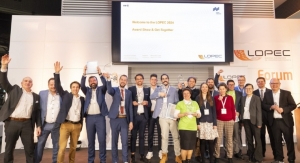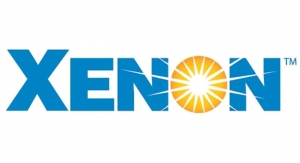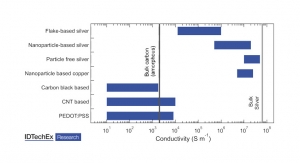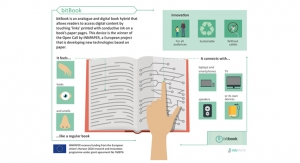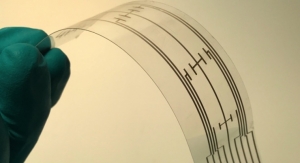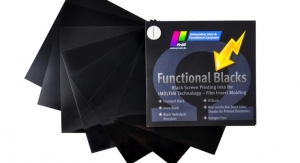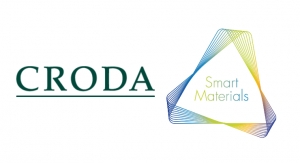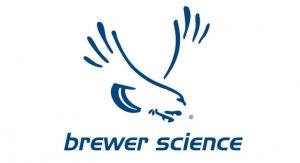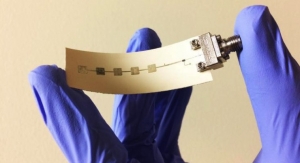David Savastano, Editor11.22.19
Flexible and printed electronics applications are increasingly appearing in commercial applications every day, from wearables for healthcare to sensors and more. Equipment and conductive inks play important roles. These were some of the insights from industry leaders during the Electronic and Conductive Inks Conference.
The conference was held Oct. 17-18 at The Drake Hotel in Oak Brook, IL, in conjunction with the National Association of Printing Ink Manufacturers’ (NAPIM) annual NPIRI Technical Conference. It was co-sponsored by NAPIM and Rodman Media, publishers of Ink World Magazine and Printed Electronics Now.
After lunch, the afternoon session was moderated by Brogan Gust of Inksolutions LLC. XENON Corporation CEO Lou Panico opened the session with “Low Temperature Photonic Sintering for Printed Electronics.”
“Pulsed light is our core technology,” Panico said. “It is our core technology. There are more than 4,000 XENON pulsed light systems running 24/7 worldwide. Pulsed light delivers very high energy pulses in extremely short periods of time, 1 megawatt pulse for 1 micro second, and the peak power phenomenon allows for deeper penetration depths.”
“Photonic sintering is right for PE – it can take place in fractions of seconds and is a non-contact process,” Panico added. “It is also a low temperature process. I think PE will be bigger than transistors. We are working on developing new lamps and creating and nourishing partnerships, and we work with many conductive nanoparticles for printed electronics needs.”
Dr. Vijaya Kayastha, lead device development engineer, Brewer Science, Inc., followed with a look at Industry 4.0 Warehousing in his talk on “Role of Materials in Performance of Printed Temperature Sensors.”
“Temperature is a key environmental factor to monitor and control,” Dr. Kayastha pointed out. “Monitoring temperature in Industry 4.0 warehousing projects protects against unnecessary loss. Sensors can monitor temperature conditions in different zones in your warehouse, while also controlling access. Brewer’s 8-channel temperature sensor array also offers a data acquisition system.”
Brewer Science’s Printed Temperature Sensor is a resistive type that uses screen printed silver ink and has a flexible form factor. Dr. Kayastha noted the advantages of printed temperature sensors.
“There are a lot of temperature sensors in the market,” he observed. “Printing is low cost, scalable manufacturing, and can have unlimited customization. It can be configurable into a sensor array at a high speed of 200 meters per second.”
Dr. Stephanie Harvey, SEMI’s R&D program manager, followed with her talk on “From Wellness to Medtech: The Role of Flexible, Printed Electronics in Wearables and Beyond.”
Dr. Harvey noted that a wearable is an electronic device that augments human senses or capabilities that is worn on an individual. She said that the first self-winding watch appeared in 1770, the first hearing aid in 1888 and the first commercial pedometer in 1965. In reality, not much has changed.
“There isn’t a lot of difference in form factors other than miniaturization of components,” Dr. Harvey said.
“Human form factors haven’t changed. Technology evolution is needed but in wearables it has been incremental.”
“Fashion designers and electronic designers are now beginning to collaborate,” she added. “In addition, the medical market is changing from focused on the doctor to patient-centric. It is personalized and decentralized. There are opportunities like patches, which has consumer familiarity and no electronic interface is needed. Wearables do not have sufficient market pull yet but medical technology may have it.”
Stewart Rissley, sales account manager, wet grinding & dispersing for Bühler Inc., discussed pre-dispersing prior to milling in his talk on “Advanced Technology and Process for Inks.”
“For inkjet conductive ink, there are great challenges due to metallic particles clogging the printheads,” Rissley pointed out. “Bead milling is the way to go as grinding media does the work. The key is pre-dispersing the solution.”
Oshadha Ranasingha, research assistant professor at the Department of Electrical and Computer Engineering, University of Massachusetts Lowell, closed the first day with his talk on “Dielectric, Ferroelectric and Resistive Inks Based on Barium Strontium Titanate (BST): Formulation, Characterization and Applications.”
“With functional inks, the key element is functional materials such as nanoparticles and polymers,” Ranasingha noted. “We have to build a recipe for the functional inks.”
One of the key motivations for the new ink is tunability, which is important in many RF/microwave applications. There are opportunities for tunable applications, including military and RF.
“BST can provide tunability by using an electric field to change the dielectric constant,” Ranasingha said. “BST offers up to 15% tunability, and is compatible with several printing technologies.”
Afterward, there was a reception and tabletop exhibition, featuring the following exhibitors: Buhler, Inc.; ChemCubed; DPI/CMC/Myers Mixers; EMI - Engineered Mills, Inc.; Harper Corporation of America; Liquid Wire, Inc.; Metallograph Division, SPF-Inc.; NAPIM; NovaCentrix; Printed Electronics Now; Sun Chemical Advanced Materials; and Xerox Research Centre of Canada.
Next year’s Electronic and Conductive Ink Conference will return to the Drake Hotel in Oak Brook, IL on Oct. 15-16, 2020. For more information, see www.printedelectronicink.com.
The conference was held Oct. 17-18 at The Drake Hotel in Oak Brook, IL, in conjunction with the National Association of Printing Ink Manufacturers’ (NAPIM) annual NPIRI Technical Conference. It was co-sponsored by NAPIM and Rodman Media, publishers of Ink World Magazine and Printed Electronics Now.
After lunch, the afternoon session was moderated by Brogan Gust of Inksolutions LLC. XENON Corporation CEO Lou Panico opened the session with “Low Temperature Photonic Sintering for Printed Electronics.”
“Pulsed light is our core technology,” Panico said. “It is our core technology. There are more than 4,000 XENON pulsed light systems running 24/7 worldwide. Pulsed light delivers very high energy pulses in extremely short periods of time, 1 megawatt pulse for 1 micro second, and the peak power phenomenon allows for deeper penetration depths.”
“Photonic sintering is right for PE – it can take place in fractions of seconds and is a non-contact process,” Panico added. “It is also a low temperature process. I think PE will be bigger than transistors. We are working on developing new lamps and creating and nourishing partnerships, and we work with many conductive nanoparticles for printed electronics needs.”
Dr. Vijaya Kayastha, lead device development engineer, Brewer Science, Inc., followed with a look at Industry 4.0 Warehousing in his talk on “Role of Materials in Performance of Printed Temperature Sensors.”
“Temperature is a key environmental factor to monitor and control,” Dr. Kayastha pointed out. “Monitoring temperature in Industry 4.0 warehousing projects protects against unnecessary loss. Sensors can monitor temperature conditions in different zones in your warehouse, while also controlling access. Brewer’s 8-channel temperature sensor array also offers a data acquisition system.”
Brewer Science’s Printed Temperature Sensor is a resistive type that uses screen printed silver ink and has a flexible form factor. Dr. Kayastha noted the advantages of printed temperature sensors.
“There are a lot of temperature sensors in the market,” he observed. “Printing is low cost, scalable manufacturing, and can have unlimited customization. It can be configurable into a sensor array at a high speed of 200 meters per second.”
Dr. Stephanie Harvey, SEMI’s R&D program manager, followed with her talk on “From Wellness to Medtech: The Role of Flexible, Printed Electronics in Wearables and Beyond.”
Dr. Harvey noted that a wearable is an electronic device that augments human senses or capabilities that is worn on an individual. She said that the first self-winding watch appeared in 1770, the first hearing aid in 1888 and the first commercial pedometer in 1965. In reality, not much has changed.
“There isn’t a lot of difference in form factors other than miniaturization of components,” Dr. Harvey said.
“Human form factors haven’t changed. Technology evolution is needed but in wearables it has been incremental.”
“Fashion designers and electronic designers are now beginning to collaborate,” she added. “In addition, the medical market is changing from focused on the doctor to patient-centric. It is personalized and decentralized. There are opportunities like patches, which has consumer familiarity and no electronic interface is needed. Wearables do not have sufficient market pull yet but medical technology may have it.”
Stewart Rissley, sales account manager, wet grinding & dispersing for Bühler Inc., discussed pre-dispersing prior to milling in his talk on “Advanced Technology and Process for Inks.”
“For inkjet conductive ink, there are great challenges due to metallic particles clogging the printheads,” Rissley pointed out. “Bead milling is the way to go as grinding media does the work. The key is pre-dispersing the solution.”
Oshadha Ranasingha, research assistant professor at the Department of Electrical and Computer Engineering, University of Massachusetts Lowell, closed the first day with his talk on “Dielectric, Ferroelectric and Resistive Inks Based on Barium Strontium Titanate (BST): Formulation, Characterization and Applications.”
“With functional inks, the key element is functional materials such as nanoparticles and polymers,” Ranasingha noted. “We have to build a recipe for the functional inks.”
One of the key motivations for the new ink is tunability, which is important in many RF/microwave applications. There are opportunities for tunable applications, including military and RF.
“BST can provide tunability by using an electric field to change the dielectric constant,” Ranasingha said. “BST offers up to 15% tunability, and is compatible with several printing technologies.”
Afterward, there was a reception and tabletop exhibition, featuring the following exhibitors: Buhler, Inc.; ChemCubed; DPI/CMC/Myers Mixers; EMI - Engineered Mills, Inc.; Harper Corporation of America; Liquid Wire, Inc.; Metallograph Division, SPF-Inc.; NAPIM; NovaCentrix; Printed Electronics Now; Sun Chemical Advanced Materials; and Xerox Research Centre of Canada.
Next year’s Electronic and Conductive Ink Conference will return to the Drake Hotel in Oak Brook, IL on Oct. 15-16, 2020. For more information, see www.printedelectronicink.com.

